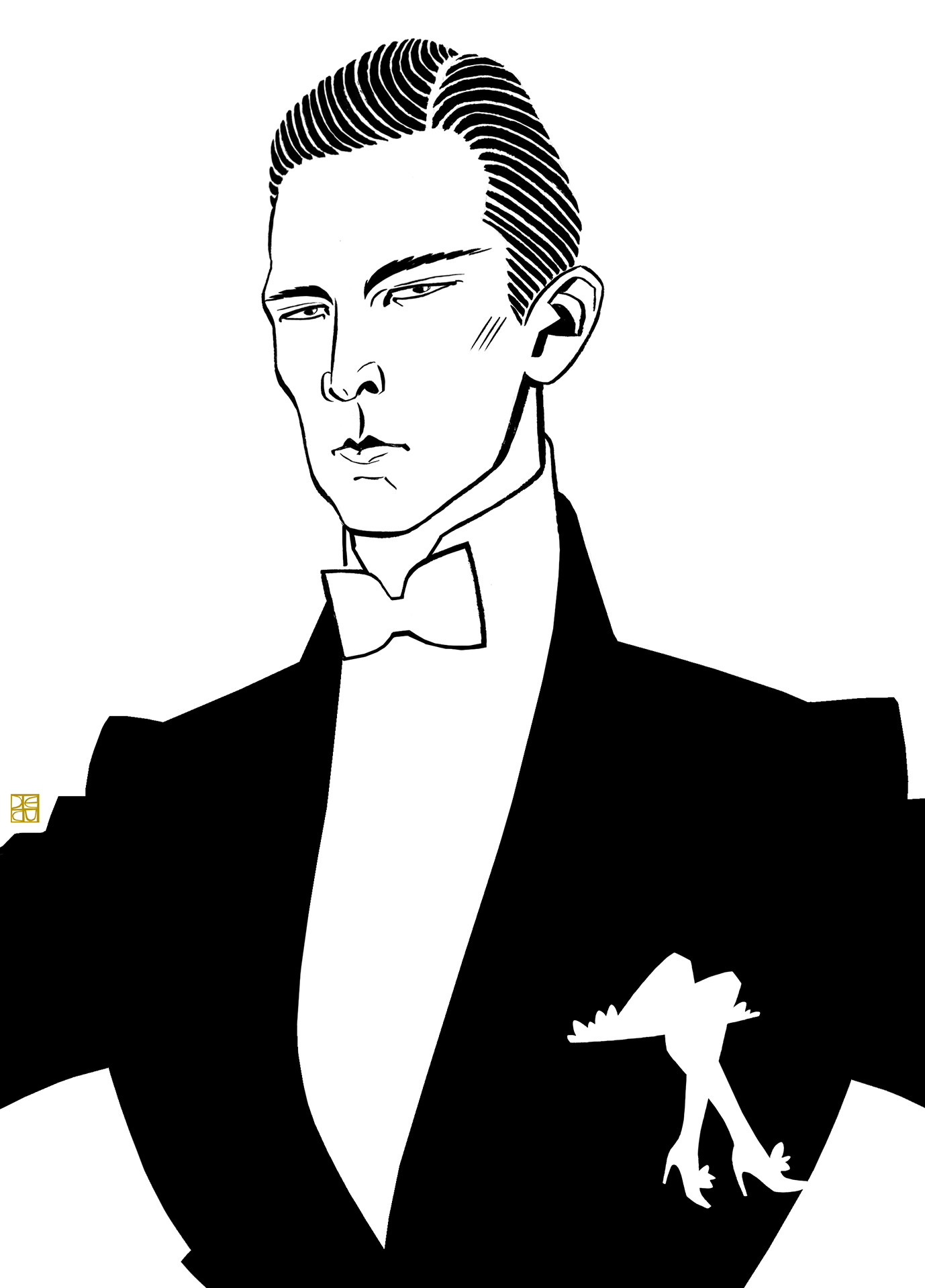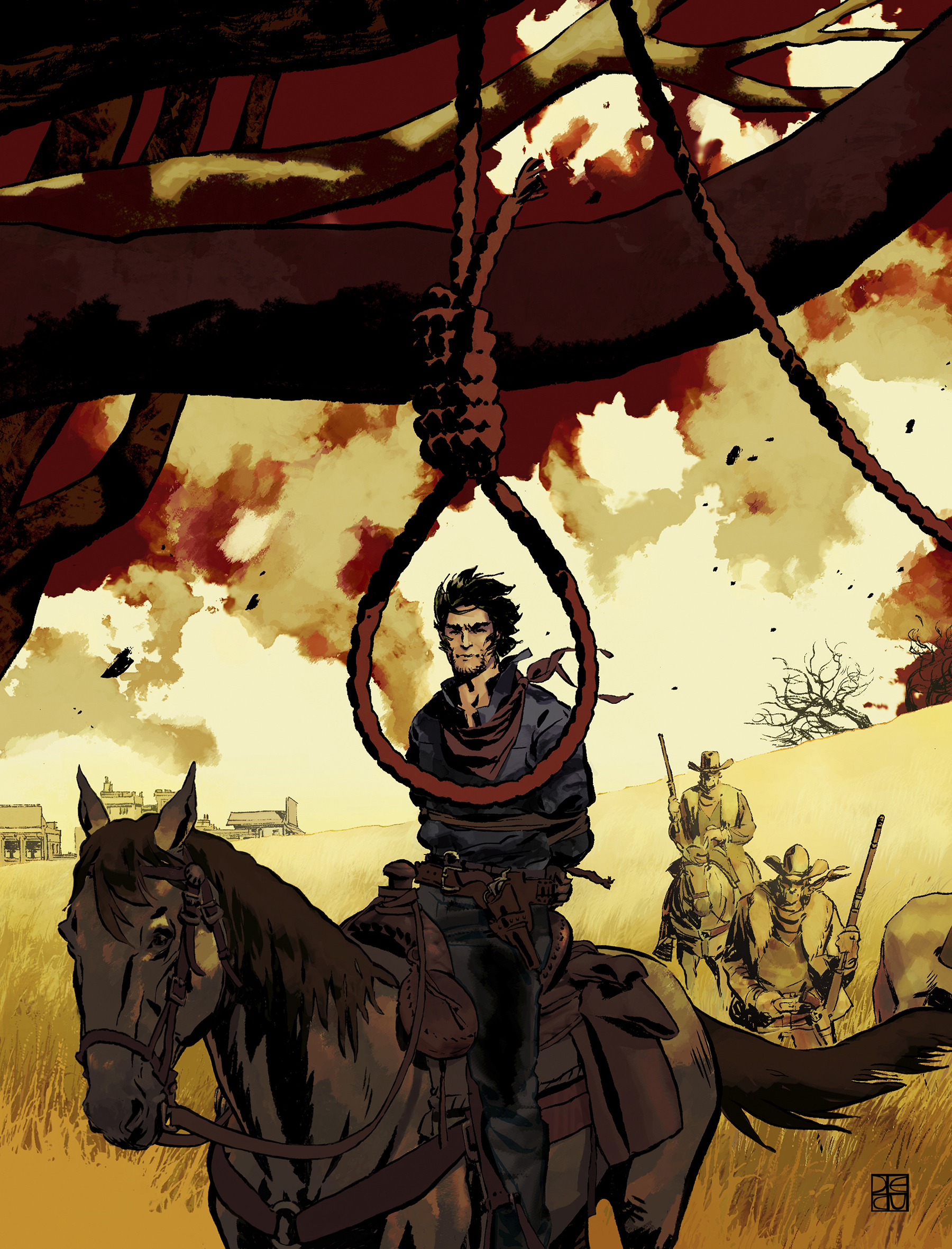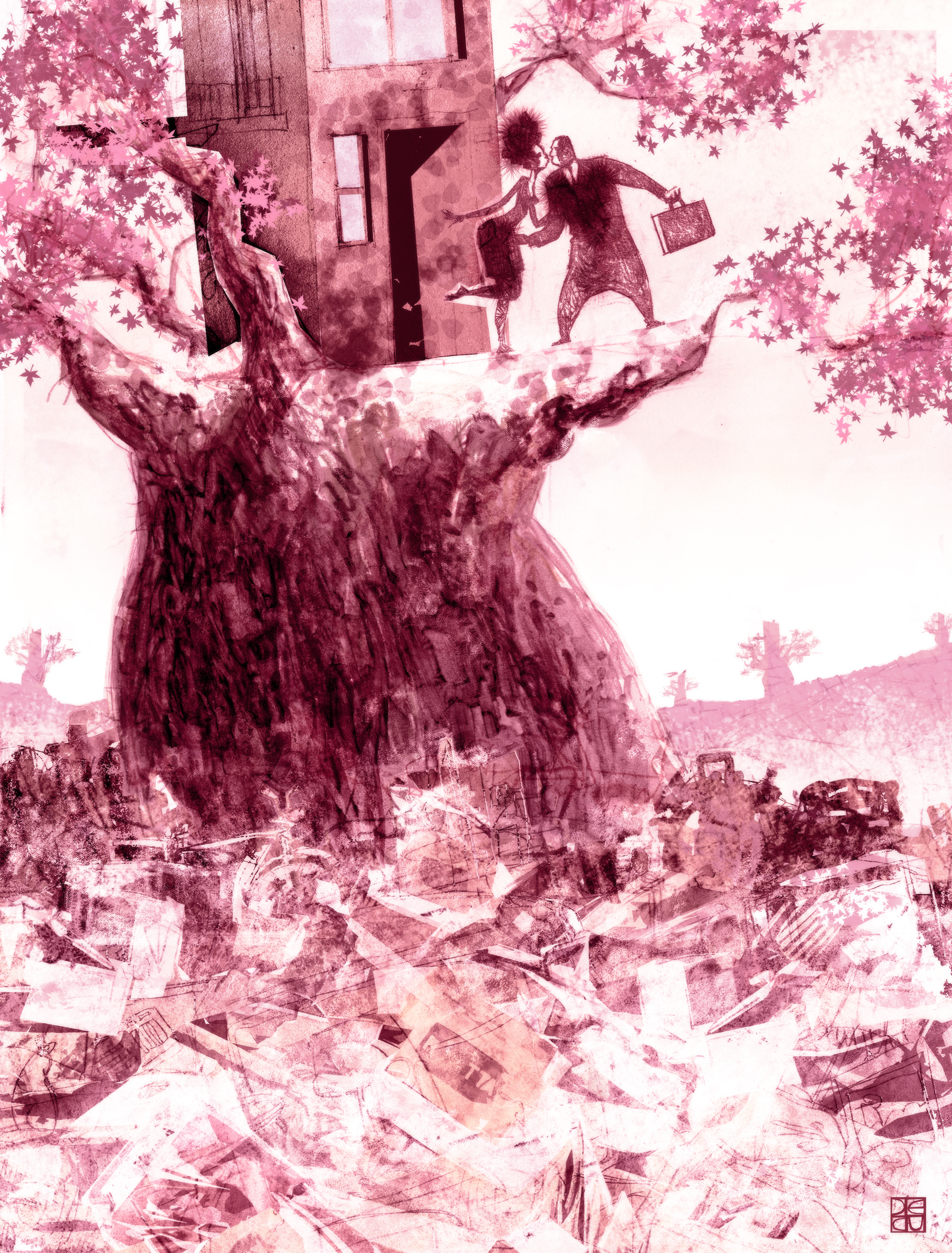Davide De Cubellis
/Where did you grow up? At what age did you start thinking about pursuing an artistic career?
I was born and raised in the outskirts of Rome. When I was 18, I was almost forced to enroll in an art school by two of my older cousins. The first day of class, I stumbled on my mates’ works and realized that I had a natural inclination for drawing. From that day on, I started to work hard for refining my skills.
Did you go to an art school or are you self taught? How did you develop your skills?
I went to Architecture school while attending a comics course. I’m convinced that the career path of an illustrator depends on several factors, and that the cultural background is as important as practice.
Have you always been supported in your artistic path or has it been challenging to let your family and friends understand your choice?
I was born in a middle-class family: my mother was a primary school teacher and my father was a serviceman. They wanted their son to get a degree and find a “real” job, a career as an illustrator was not what they expected. Until I finally started to earn money and became independent, my parents did not support me.
What was the strongest influence you had when you were growing up ( artists, movies, cartoons, comics etc.. ) ?
As a young boy I was fond of art and cinema, I approached comics very late. Exploring Illustration world was even more difficult, because of a lack of references.
Did you have a favourite subject to draw when you were a child and do you still have one today? If you do, what makes it so special?
Like the most of children, I drew everything that tickled my fancy: a robot, a horse, the portrait of my grandfather. As a teenager I started using art to communicate, especially with my desk mate, whom I had a crush on. Today I have no preferences.
From the initial client idea to the final work: What goes through your mind and what is the method you use when starting a project? Could you describe it?
I always try to meet the requirements of my clients, engaging in a dialogue with them and gaining their confidence. Sometimes I may point out an issue and provide some viable alternatives. The rest of the job is technique and experience, with a certain amount of wisdom. I’m quite good at doing storytelling with my illustrations. I’m telling from experience, if you put the pencil on the sheet, then you take one leap forward on your creative journey. The finish line is just some sketches away.
What is your process in creating your art and what are your favourite tools?
I grew up drawing with pencil and paper, they’re my “comfort tools” and help me finding inspiration and ideas. Then I follow up using the fitting technique, refining my work with digital tools: this way it’s easier to modify the result if necessary. Among traditional tools I am particularly fond of pantone markers. Today there are the Promarkers (once produced by Letraset, now by Winsor & Newton).
What part of the creation process is the most fun and easy and what part is the hardest?
The answer depends on one’s personality. In my case, the funniest part of this job is planning, when you can be creative and exploring ideas. The rendering part is the hardest one, because it’s complex, boring and leaves you feeling pressure. There’s also the risk of losing the freshness of the original sketch, at this point the challenge is trying to overcome the idea itself.
What is a typical day for you, and who are the people you work, collaborate or share your creative time with?
I work alone, at home. But my girlfriend is an illustrator, so we often ask for advice to each other during the day. I also share thoughts, ideas and opinions while chatting with friends and artist colleagues. My day is a mess: I’m not a creature of habit and I end up working late at night, when I have fewer distractions. Even now, while I’m answering these questions, it’s getting dark.
What are some of the things you have learned from other artists who you have worked with or whose work you have seen?
I’ve been lucky enough to work with many top professionals, especially during my first years. Each one of them helped me manage/handle different aspects of the work. The comparison with the colleagues is essential, but we should never forget that doing your job properly and gaining social media fame are two different stories.
Is there something that you have designed that you are most proud of?
I manage to strike a compromise between work and the short time available. When the client like the result, I’m satisfied even with the constraints/requirements process.
What projects have you worked on in the past and what are you working on at the moment (if you can tell us)?
It’s hard to answer in a few words, as I have been working for 20 years as a comic artist, illustrator and storyboard artist. In the last few years I devoted myself to storyboard, especially for cinema e commercials. Recently I’ve worked for a Danny Boyle’s series, three Italian films and every month I’m involved in a new advertising campaign.
Do you have a longterm career goal? What would your dream project be?
As for any freelancer, planning for the old age requires organization. Let’s say that my long-term goal is to keep sustaining myself while doing what I love. I’m also a teacher, and I dream about making Rome a bustling city for illustration.
Working in-house for a company or freelancing: what suits you best? And why?
Working freelance. You can manage jobs, schedules and clients as you see fit; work at home or in an independent space with fellow-friends. Office routine would kill me, besides I could never work in slippers while I’m smoking a cigar.
What advise would you give to an artist who is dealing with an artist's block? How do you boost your imagination and keep yourself creative?
An artistic block is the symptom that something else in your life is not working. Our mind is fuelled by our cultural experiences and our creativity is supposed to be trained as well. The biggest mistake you can make when you have stalled is to stare at the blank sheet looking for references. The best thing to do is to begin to draw, anything: an idea eventually will come out.
Who are the artists who inspire you the most today and what are some of your favourite designs out there?
There are thousands of artists and millions of amazing works. Over the years I have manically loved Ferenc Pintér, Duilio Cambellotti, James Jean, Bernie Fuchs, Tadahiro Uesugi, Reneé Gruau ... the list would be endless.
Concept art, animation, illustration, comics, you name it. There are so many careers and when you are very young, sometimes you know only one thing: you simply love to draw. In your opinion, what should a young artist take into consideration to make the right decision when choosing an artistic path?
This is a very tricky question. I do not agree with the fact that young people "simply love to draw". As a teacher I meet many students with a plan, even before starting the course. Most of them are millennials: they always feel pressure, they’re ambitious and eager to gain people’s approval. The fault is on the social networks. They should focus on their studies without much thinking about the future. Schools and art courses are important, but the most important thing is to understand where the best teachers are, and what they can teach you.
IDEA Academy is one of the most appreciated art teaching centre in Europe. Can you tell us a bit more about the school?
IDEA Academy is one of the best teaching centres in Europe and it continues to grow. In a few years the number of students has steeply increased, thanks to the variety of the courses (Visual Development, Illustration, Workshops) and a team of experienced teachers/artists. In the Visual Development master I teach storyboard, shooting board, visual development: Storyboard is one of the most difficult subject, in fact in every country there are a few storyboard artists compared to character designers and other concept artists. Our students made an impression on recruiters last Annecy Festival by presenting storyboard pages in their portfolios. I’m also the Illustration course director. The teaching staff is composed of 35 among the best Italian illustrators, but also of editors, copywriters and graphic designers. I’m firmly convinced that it is the best Illustration course in Italy.
What’s your point of view about the industry today: what are the expectation for someone who wants to make a living with an artistic career?
Living on art and creativity is possible. You can even live well. Today the possibilities are unlimited, and talent counts less than perseverance, patience: you can always learn and at any age. The important thing is to put an effort into it. As with any job, it’s a very competitive environment, not an easy road. It's like sailing on the wide sea: you reach the mainland if you're a good sailor and you face the storm, eventually if you're lucky. Luck is random. But you can always try to become a good sailor.
As a teacher of IDEA Academy, what are the most common mistakes that you come across when reviewing the work of your students? How important is it to receive feedback from a professional such as yourself, and how will students benefit from it?
Students often lack dedication. One of their biggest faults is not to step out from their comfort zone and stop drawing their favorite subjects: a little effort that can bring amazing results. A young artist who really wants to learn and improve, already knows his weakness and sometimes a teacher's feedback just confirm his fears. Most of the time, students’ mistakes are caused by the enemy “Laziness”: at a certain point, all the designers should unlearn their lesson and start all over again. Everything else in this job is grammar, syntax, style and training. And over time, a feedback can take a completely new turn: as a young student, the opinion of teacher can lead you in the right direction, as a professional artist, a piece of advice from a colleague can help you find your bearings on the way, especially if the advice regards the target audience.
Finally, where can we see your art online and get in touch with you? Where can we find all the info to know more about your teaching approach and enrol to your classes?
You can find me easily on the social networks, Facebook and Instagram, where I publish my latest works. I have an old blog ( decubellis.blogspot.com ) but I often update another blog dedicated to storyboards and shooting boards ( italianstoryboard.com ). I’m a teacher at IDEA Academy, on school’s webpage you can find all information about the courses, the master I direct ( Illustration360 ) and my storyboard workshops ( idea-academy.eu ).
Join Davide's next class!
Davide De Cubellis is one of talented instructors of IDEA Academy. Discover all the details about his course, join his next class and develop the skills you need to enter the industry and pursue the career you love.















































































